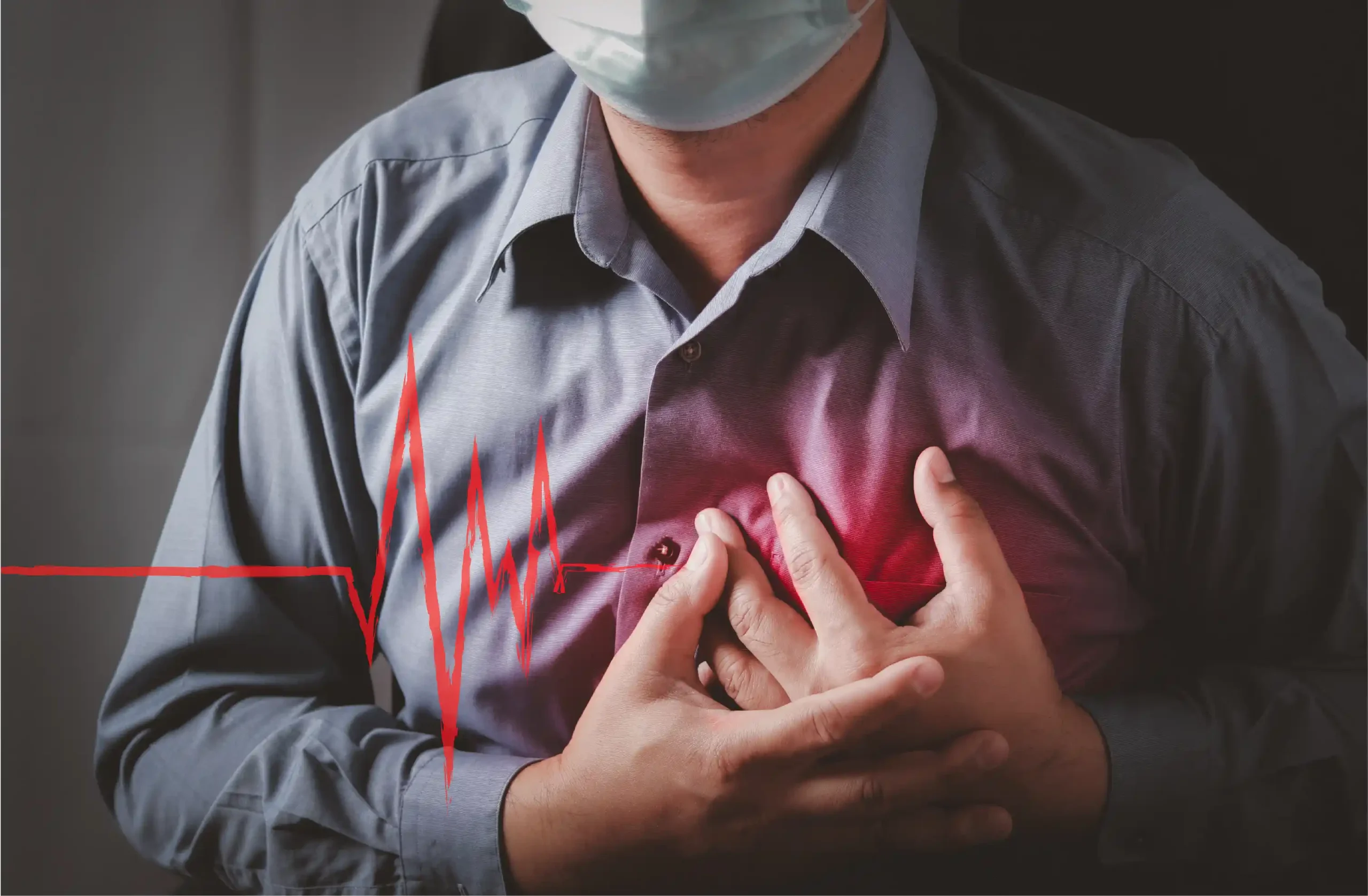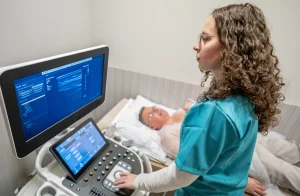When sudden cardiac arrest (SCA) strikes, it’s unexpected and urgent. The heart stops, blood flow halts, and within moments, a life hangs in the balance. Yet, with the right actions, survival becomes a real possibility—and that’s where the Chain of Survival comes in. This simple yet powerful sequence of steps can turn bystanders into lifesavers, even if they don’t have medical training.
In this blog, we’ll break down the Chain of Survival into clear, manageable steps that anyone can follow. Whether you’re at home, at work, or simply out in public, knowing these steps equips you to respond quickly and confidently. Let’s explore how understanding this process can empower us all to save lives when every second matters.
What is the Chain of Survival in the Context of Cardiac Arrest?
The Chain of Survival is a structured, step-by-step approach designed to provide the best possible chance of survival for someone experiencing SCA. Developed by the American Heart Association, it highlights the importance of each step in saving a life. Think of each step as a link in a chain—when each link is strong and unbroken, the overall chance of survival improves.
The History of the Chain of Survival
In the early 1960s, researchers and healthcare providers began recognizing the importance of rapid response in cardiac emergencies. At this time, the idea of performing chest compressions to restart the heart was relatively new, with CPR (cardiopulmonary resuscitation) gaining traction as a key intervention. Dr. James Jude, Dr. Guy Knickerbocker, and Dr. William Kouwenhoven were among the first to publish work on the benefits of chest compressions in the 1960s, laying the foundation for modern CPR techniques.
As CPR gained popularity, medical professionals noted that survival rates improved significantly when bystanders performed CPR immediately. This realization led to a shift in thinking: quick and organized responses could make a life-or-death difference in cases of sudden cardiac arrest.
In the late 1980s, the American Heart Association (AHA) and other emergency medical organizations started to formalize this structured response to sudden cardiac arrest. In 1991, the AHA introduced the “Chain of Survival” as a model to illustrate the sequence of steps necessary to optimize survival chances during cardiac emergencies.
Breakdown of the Steps in the Chain of Survival
The Chain of Survival is a series of coordinated actions that significantly improve the chances of surviving sudden cardiac arrest (SCA). Each link in the chain represents a critical step that must be taken as quickly as possible to maximize survival chances. Let’s look at each step in detail.

1. Early Recognition and Call for Emergency Help
The first step in the Chain of Survival is recognizing that someone is experiencing a cardiac emergency and immediately calling for help. This step ensures that emergency services are notified and en route while other life-saving actions begin.
- Recognize the Signs: Cardiac arrest often causes a sudden loss of consciousness, no pulse, and no breathing. Other symptoms can include gasping or abnormal breathing.
- Call 911 (or Emergency Services): Promptly calling for help ensures that advanced care is on the way. While on the phone, the dispatcher may provide instructions to help you start CPR or locate an AED.
Why It Matters: Immediate recognition and calling for help mobilize professional resources as fast as possible, providing a better chance for a positive outcome.
2. Early CPR (Cardiopulmonary Resuscitation)
CPR is the process of manually compressing the chest to maintain blood flow to the brain and other vital organs. The goal is to keep the blood circulating until advanced care arrives.
- Hands-Only CPR: For those untrained in traditional CPR, hands-only CPR (chest compressions without mouth-to-mouth) is highly effective. The guideline is to press hard and fast in the center of the chest, at a rate of about 100-120 compressions per minute.
- Importance of Chest Compressions: Compressions mimic the heart’s pumping action, supplying oxygen to the brain and other organs.
Why It Matters: CPR keeps blood flowing to the brain and organs, which can prevent permanent brain damage and improve survival chances. Studies show that survival rates double or even triple when CPR is initiated immediately.
3. Rapid Defibrillation
Defibrillation is the process of delivering an electric shock to the heart to restore a normal rhythm. In most cases of cardiac arrest, an irregular heart rhythm (ventricular fibrillation) is the cause, and defibrillation can help restart a steady heartbeat.
- Automated External Defibrillators (AEDs): AEDs are portable devices found in many public places, designed to be used by non-medical individuals. They provide voice-guided instructions to ensure proper use.
- When to Use an AED: If someone is in cardiac arrest and an AED is nearby, turn it on and follow the prompts. The AED will determine if a shock is necessary and instruct you accordingly.
Why It Matters: Quick defibrillation is one of the most effective ways to restart the heart. Each minute without defibrillation decreases the chance of survival by 7-10%. Rapid defibrillation within the first few minutes can double or triple survival rates.
4. Effective Advanced Life Support
Once emergency medical services (EMS) arrive, they can provide advanced life support (ALS), which includes a range of life-saving interventions that go beyond CPR and AED use.
- Advanced Interventions: EMS professionals may administer medications to stabilize the heart rhythm, secure airways, and monitor the patient’s condition more closely.
- Transport to the Hospital: The EMS team stabilizes the patient and prepares them for safe transport to the hospital, where further specialized care is available.
Why It Matters: ALS interventions, combined with rapid hospital transport, increase the chances of survival and improve recovery outcomes by addressing underlying medical issues.
5. Post-Cardiac Arrest Care
After a person’s heart is restarted, they need specialized care to prevent further complications and ensure a full recovery. Post-cardiac arrest care happens in a hospital setting and involves a variety of medical interventions.
- Therapeutic Hypothermia: Cooling the body to prevent brain damage is sometimes performed after cardiac arrest.
- Monitoring and Stabilization: Patients are monitored for irregular heart rhythms, respiratory function, and organ function to ensure that they remain stable.
- Long-Term Treatment: Doctors assess and address any underlying conditions, like coronary artery disease or arrhythmias, to prevent future cardiac events.
Why It Matters: Quality post-cardiac arrest care is essential for improving survival rates and quality of life after cardiac arrest. This step can mean the difference between surviving with long-term health and facing severe complications or relapse.
Prevent heart problems before they start – Schedule a preventive checkup
Contact UsWhy Each Link in the Chain of Survival is Essential
Every second matters when someone experiences sudden cardiac arrest. Each link in the Chain of Survival is designed to maximize those precious moments, each one contributing uniquely to survival chances. Immediate action, effective CPR, quick defibrillation, and advanced medical care together form a strong chain that greatly improves the likelihood of surviving a cardiac emergency.
Together, these steps form a seamless approach that empowers bystanders, medical responders, and hospital staff to act quickly and effectively. Familiarizing yourself with these steps could one day empower you to save a life, knowing each action you take plays a crucial role in the Chain of Survival.
Words By Author
The Chain of Survival illustrates how, with quick action and simple steps, anyone can be part of saving a life during a cardiac emergency. Every link in the chain, from calling for help to providing CPR and using an AED, is crucial to survival. Knowing this chain equips us to respond effectively, giving those in need the best possible chance at recovery.







